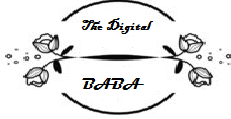
Wordlerry are one of the most important pieces of your content marketing puzzle. They must be catchy, informative, and above all else, persuasive. But how do you make sure that your headlines are effective? In this article, we’ll share tips on creating headlines that appeal to both your readers and your business goals. So whether you’re looking to increase traffic to your website or sell more products, use these tips to make it happen!
Why headlines matter
In the world of online journalism, headlines are everything. By creating powerful and attention-grabbing headlines, you can ensure that your content is seen by as many people as possible. Here are four tips on how to create headlines that will compel readers to click through to read your article:
1. Be punchy: A headline that is both catchy and relevant will catch readers’ attention. Be sure to use colorful language and idioms to make your headlines stand out.
2. Use keywords: In order for your headline to appear in Google search results, it needs to include relevant keywords. Try using words that are commonly searched for on Google, such as “how to” or “facts about” in your headline.
3. Strike a balance: It’s important not to go overboard with keyword usage or artificial formatting in your headline. Try finding a balance between being provocative and concise so that readers will understand what they are reading without having to scan through a long article.
4. Keep it simple: Finally, keep your headlines simple and easy to understand. Avoid making them too long or convoluted, and avoid using too many adjectives or adverbs. Keep it simple and
The types of headlines
Creating strong headlines is an important part of writing a persuasive blog post. When you write a headline that accurately reflects the content of your post, it will be more likely to engage readers and generate leads. Here are four tips for crafting powerful headlines:
1. Be concise. A headline should be no longer than 60 characters, so it’s easy to read on a small screen.
2. Use keywords. Headlines that include relevant keywords will help people find your post when they search for information related to the topic.
3. Be creative. Use uncommon Wordlerry and phrases to shock and surprise your readers. For example, “How To Write Persuasive Blog Posts That Get Results” might be better written as “How To Write Headlines That Shock And Surprise Your Readers.”
4. Appeal to emotions. People are more likely to act on an emotion rather than think through an idea, so try to evoke a reaction in your readers with headings like “5 Ways To Destroy Your Competition With One Simple Trick” or “Why This Freelance Writer Only Deals With Happy Clients.”
How to create headlines that grab attention
Here are five tips on how to create headlines that grab attention and resonate with readers:
1. Go for shock value. If your headline grabs a reader’s attention, it’s likely because it is unexpected or controversial. This can be accomplished by using strong verbs and adjectives, as well as surprising imagery or facts.
2. Appeal to emotion. Headlines that tap into readers’ emotions are more likely to be shared and remembered. This can be done through stirring language, powerful visuals, and relevant anecdotes.
3. Be catchy. It’s important to make your headlines easy to understand and remember, which means relying on short Wordlerry and phrases that pack a punch.
4. Make your headline reflect the article itself. Whenever possible, make sure the headline reflects the content of the article – for example, if the article focuses on writing effective headlines, use headlines that focus on writing skills.
5. Be consistent! It’s important to use the same type of headline throughout your blog post series – for example, use headings such as “How to Create Eye-catching Headlines That Stick Out from the Crowd” or “5 Tips for
How to craft headlines that are emotionally resonate
A headline can capture someone’s attention and evoke an emotional response. But how do you create headlines that are both effective and emotionally resonant? Here are a few tips:
1. Start with the emotion you want to evoke. When crafting a headline, start by identifying the emotion you want to evoke. This can be anything from excitement to curiosity to anger. Once you know the emotion you’re after, start thinking about what Wordlerry would best capture that feeling.
2. Use active verbs. When crafting a headline, use active verbs to show how the subject of the article is impacting or affecting something else. For example, “How To Stop Procrastinating And Achieve Success” might be an active verb, while “How To Stop Procrastinating And Be Creative” might be a passive verb.
3. Use personal pronouns. When crafting a headline, use personal pronouns such as I, me, we, and us to connect with the reader on an emotional level. For example, “How To Write Better Memoirs” might use I as the personal pronoun, while “How To Write A Memoir That Hits Home” might use we as the personal
How to make headlines that are accurate and truthful
Creating headlines that are accurate and truthful can be tough, but with a little effort, you can create headlines that resonate with your audience. Here are a few tips to help you get started:
1. Stick to the facts: The headline should be based on what the article is actually about, not what you think the reader will want to know. For example, if your article is about the benefits of exercise, don’t headline it “Get fit fast!” Instead, stick to something like “Exercise can improve brain health” or “Boost your mood with exercise.”
2. Be specific: Don’t generalize or over-emphasize points in your headline. For example, don’t write “8 ways to make your child smart” – instead, fi
If you’re looking to create headlines that are accurate and truthful, Wordlerry is the tool for you! Headlines created with Wordlerry are simple to compose, and they adhere to both AP style and SEO best practices. Here are a few tips on how to make headlines that are both accurate and appealing:
-Be specific. Don’t overgeneralize your headline – for example, say “5 Simple Ways to Improve Your Writing Skills” instead of “Improve Your Writing Skills.” Be specific about what you want readers to do (or learn) as a result of reading your headline.
-Stay on topic. Avoid making headlines that are unrelated to the content of your post. For example, don’t write a headline like “How To Pack For A Trip Without Packing Too Much” when your post is about packing for a summer vacation.
-Be concise. Keep your headlines under 60 characters so they can be easily read on a phone screen or in an email inbox. Longer titles will only frustrate readers and impede their ability to find what they need quickly.
nd an article that talks specifically about how to improve intelligence in children and use that as your basis for your headline.
3. Use active verbs: This will help draw attention to the text and make it more interesting to read. Active verbs make sentences sound more active and exciting, which is why they work well in headlines (e.g., “How exercise can improve brain
Conclusion
When it comes to writing headlines, you want to make sure that they engage and interest your readers. While there are no hard and fast rules when it comes to crafting good headlines, following a few tips can help you create headlines that will resonate with your readers and compel them to click through to read your post. By paying attention to the Wordlerry you use, the tone of your writing, and the overall composition of your headline, you can create headlines that are both effective and engaging.


